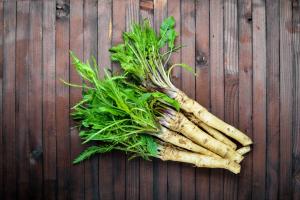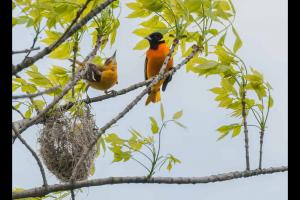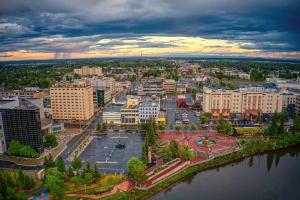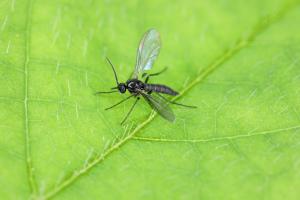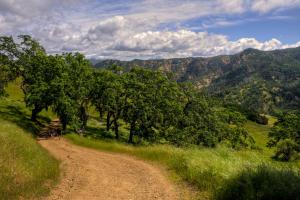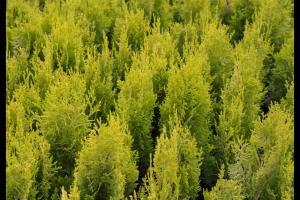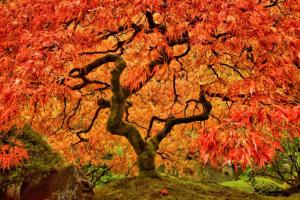The 14 Best Things You Can Still Plant in Pennsylvania in October
Spooky season is just around the corner and change is in the air. Pennsylvania landscapes are transforming, while summer blooms fade gracefully, turfgrass begins to brown, and vibrant colors grace foliage. It’s October in the Keystone State. This Halloween month presents unique opportunities for gardeners. Discover the 15 best things you can still plant in Pennsylvania in October and enjoy a thriving landscape until the winter air sets in.
Pennsylvania’s Fall Climate
Pennsylvania’s USDA Hardiness Zone falls between 5a to 7b, depending on your location. The fall climate marks a period of transition from the warmth of summer into the cold northeastern winter months. The Quaker State experiences four distinct seasons, with October temperatures hovering between 50 to 60 degrees Fahrenheit.
October is drier when compared to Pennsylvania’s rainy summers. However, it still experiences consistent moisture. Northern portions of the state also typically experience the first frost towards the end of the month. Fall is an important harvest season for Pennsylvania’s agricultural scene.
Only The Top 1% Can Ace our Animal Quizzes Think You Can?Take Our A-Z-Animals Plants Quiz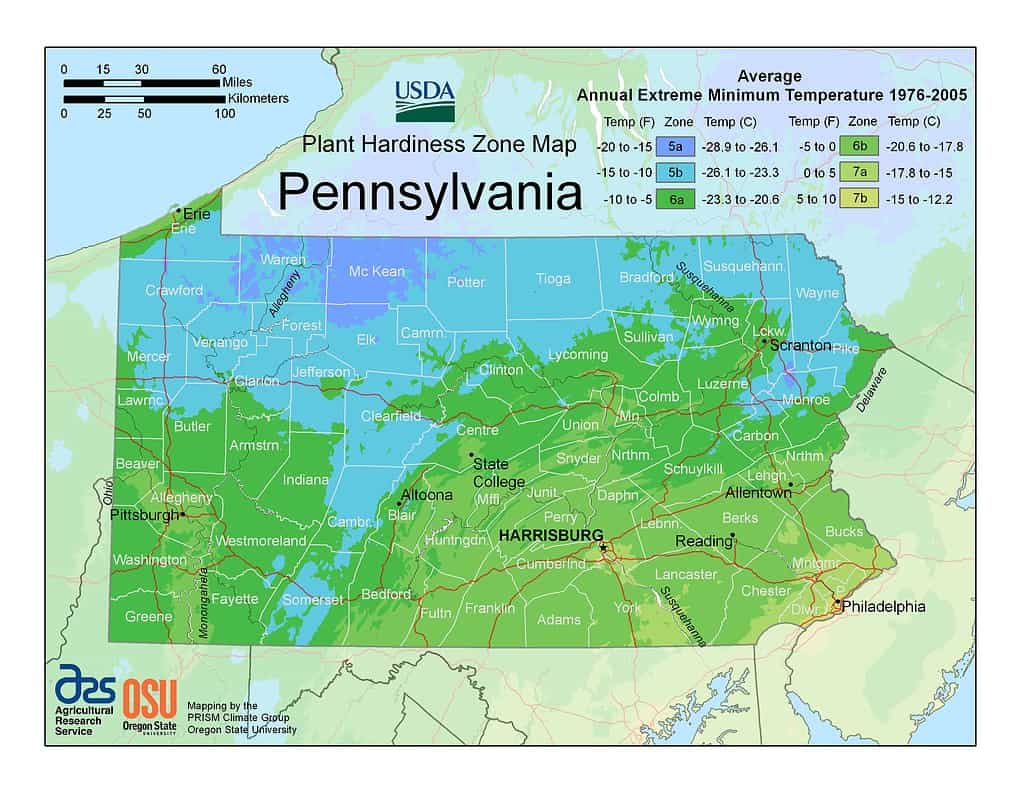
©https://planthardiness.ars.usda.gov/ – License
The 15 Best Things You Can Still Plant in Pennsylvania in October
1. Asters (Aster spp.)
Daisy-like asters are a fall-blooming perennial that grows well in several states including Pennsylvania. They are a genus of flowering plant that covers a variety of species that share common traits. Asters bloom daisy-shaped flowers in shades of purple, pink, blue, or lavender. They also produce lance-shaped, hairy leaves and reach heights up to 4 feet.
Asters are hardy and well-suited to Pennsylvania’s USDA Zone. They love well-draining soil and full sun. You can plant the fall bloomers in the spring, early summer, or early fall. Deadhead spent flowers to encourage prolific blooming.
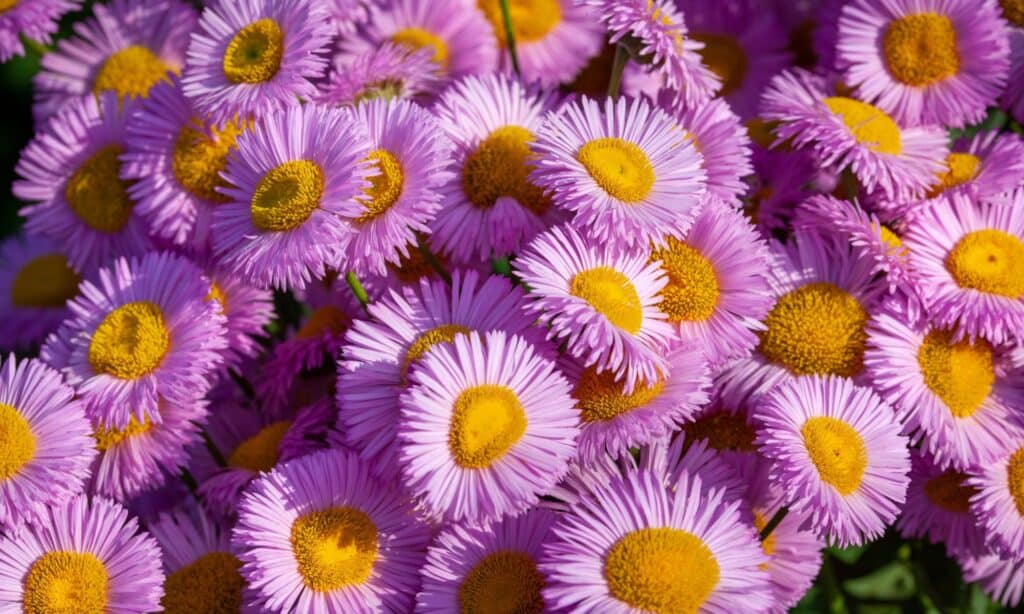
©Klever_ok/Shutterstock.com
2. Blackhaw Viburnum (Viburnum prunifolium)
Also known as sweet haw or smooth blackhaw, blackhaw viburnum is a native deciduous shrub that thrives in Pennsylvania’s climate. Specimens grow up to 15 feet tall, producing glossy dark green leaves that turn shades of red, purple, and burgundy in the fall. Blackhaw viburnum also produces red berries that ripen to blue-black, making it a valuable addition to wildlife-friendly landscapes.
Specimens prefer well-drained soil and tolerate a range of soil types. They are also low-maintenance and drought-tolerant once established. They grow well in full sun to partial shade and do not require pruning. However, you can shape them after their flowering period to your desired size.

©mizy/Shutterstock.com
3. Broccoli (Brassica oleracea var. italica)
This cool-season vegetable is a reminder to eat your vegetables and take your vitamins. High in vitamins C, K, and A, this versatile vegetable grows well throughout Pennsylvania. It comes in many varieties and grows well in both the spring and fall. The U.S. is also the largest producer of broccoli though it is native to the Mediterranean region.
Specimens thrive in moist but well-draining, rich soil and full sun. They tolerate partial shade but produce smaller crowns in these conditions. Like leafy vegetables, broccoli is susceptible to pests and diseases including aphids, cabbage worms, downy mildew, and clubroot.
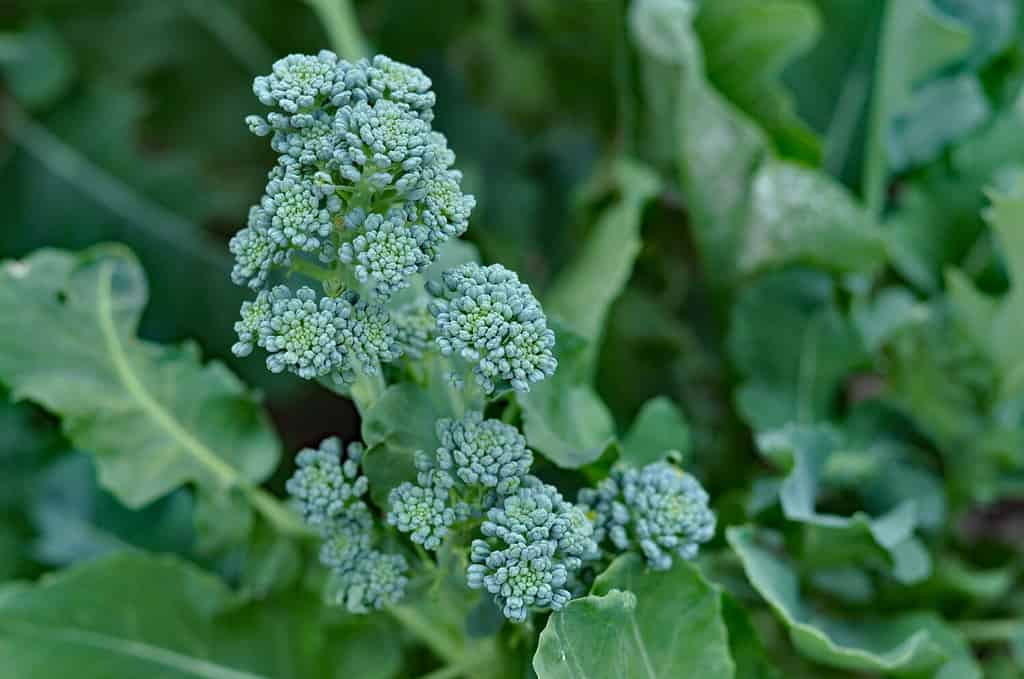
©Verity McColl/Shutterstock.com
4. Carrots (Daucus carota subsp. sativus)
We’ve all heard carrots are good for our eyes. This widely consumed vegetable produces vibrant, crisp, orange roots with a sweet flavor. They are a cool-season vegetable well-suited to Pennsylvania’s October climate, and they grow well in the spring and fall.
Carrots are rich in vitamin A and benefit from a layer of mulch to conserve moisture. They thrive in well-draining soil that is free of rocks and clumps. Carrots also grow best in full sun but tolerate some shade. They do not tolerate heavy fertilizers and grow well in beds and containers.
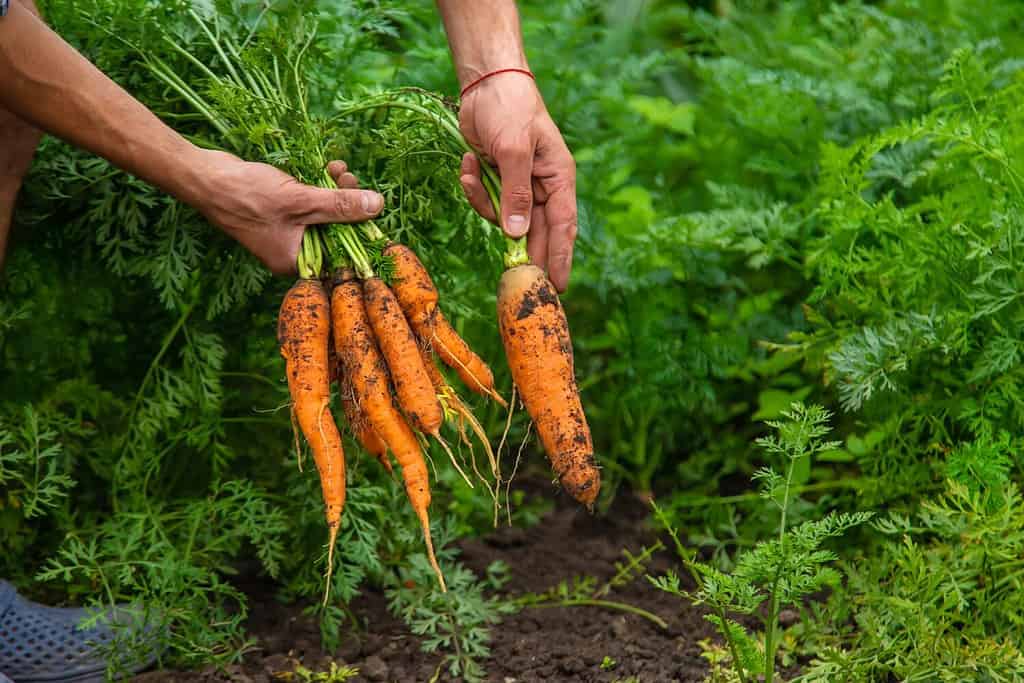
©Tatevosian Yana/Shutterstock.com
5. Chrysanthemums (Chrysanthemum spp.)
Perhaps the most noteworthy and recognizable fall perennial, chrysanthemums, or mums, are well-adapted to Pennsylvania’s October climate. These unique bloomers thrive in cooler fall temperatures, producing showy, daisy-shaped flowers in a variety of colors like yellow, white, orange, and red. Specimens also produce lobed or serrated foliage depending on the variety.
Mums prefer well-drained soil but thrive with consistent moisture. They grow best in full sun and require six hours of direct sunlight per day. Their blooms vary in size from small, button-sized blooms to larger specimens. Pinch back young stems to encourage bushier growth and bigger blooms.
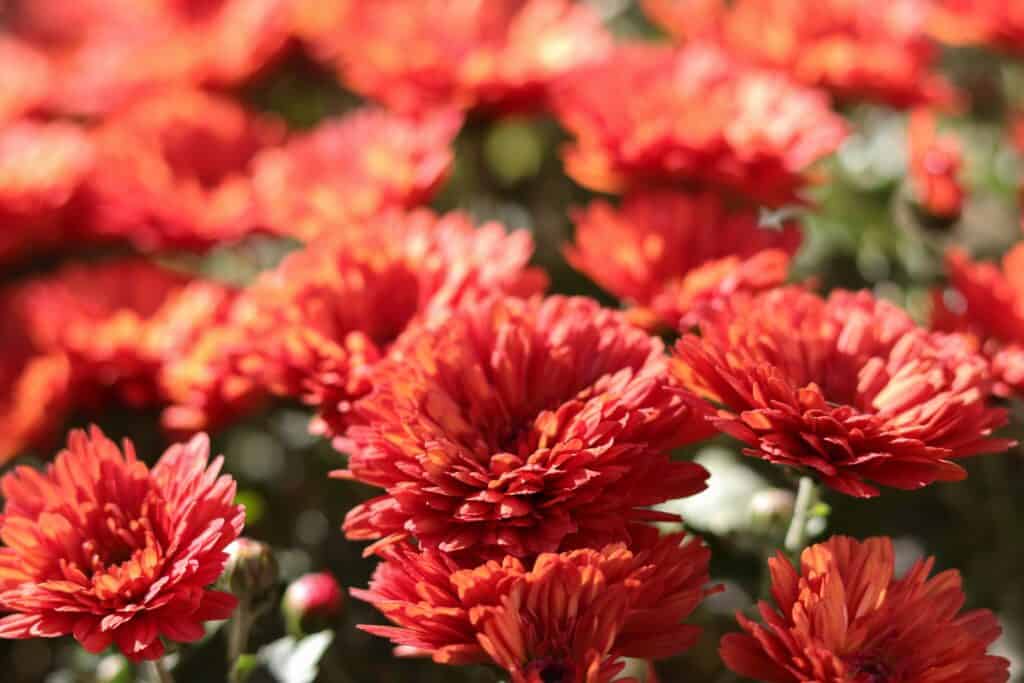
©Mariia Romanyk/Shutterstock.com
6. Cilantro (Coriandrum sativum)
This herb tastes like soap to some people. Nonetheless, it is a popular culinary ingredient boasting a fresh, citrusy flavor that is popular in various cuisines including Mexican, Indian, Thai, and Mediterranean. Beginner gardeners often mistake this herb for summer sun-loving basil. However, cilantro is a cool-season herb that thrives in the crisp October air.
Specimens bolt in hot weather, which means they seed and are virtually inedible, making spring and fall the ideal growing seasons. Cilantro prefers well-draining and fertile soil. They also grow best in full sun and moist soil. They do not require fertilizer and are generally low-maintenance.
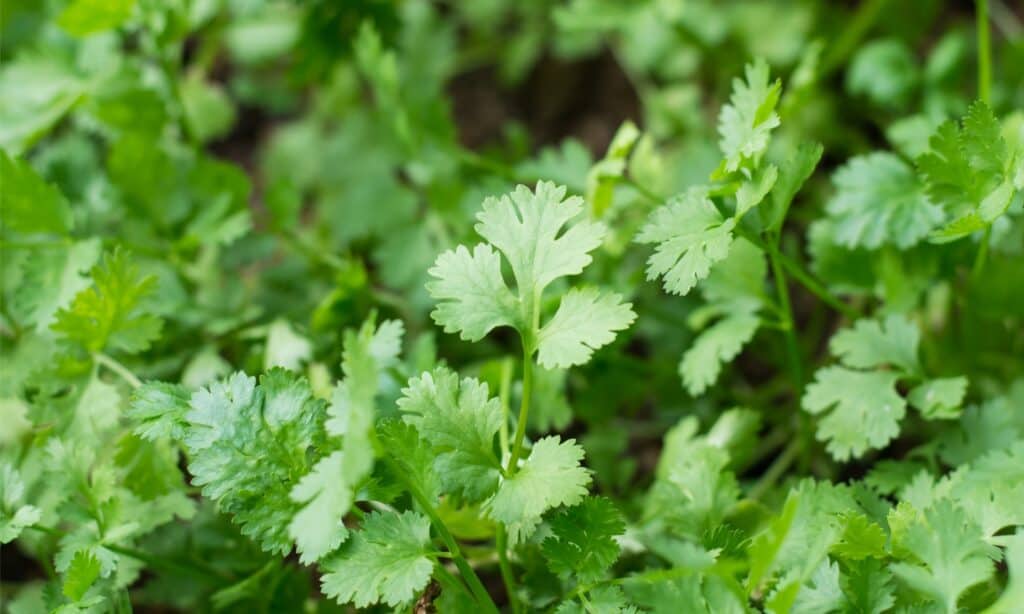
©iStock.com/Tevarak
7. Crocus (Crocus spp.)
Crocus is another bulb species that thrives in the spring when planted in the fall. The genus encompasses over 100 species of flowering perennials with spreading or clumping growth habits that thrive in masses. Crocus is winter- and early-spring blooming and also one of the first flowers to produce bright blooms after the melt of the Pennsylvania snow.
Specimens produce cup-shaped blooms with six petals in a variety of shades including purple, white, yellow, and blue. Blooms are usually small. Crocus plants also produce grass-like leaves that emerge with their flowers. They thrive in well-drained, nutrient-rich soil and full to partial sun. They also require consistent moisture to thrive but do not respond well to over-fertilization.

©iStock.com/Wirestock
8. Daffodils (Narcissus spp.)
October is an excellent time to plant daffodils in Pennsylvania. While they are spring bloomers, planting daffodils in the fall allows them to develop deep roots. Specimens produce trumpet-shaped flowers in shades of yellow, white, or pink. They have grass-like foliage and reach heights of around 12 inches.
Daffodils grow best in the well-draining soil and full sun. They appreciate nutrient-rich varieties and applications of slow-release fertilizer in the spring. These bulb plants also appreciate consistent moisture and a layer of mulch to protect them from extreme Pennsylvania temperatures.
Daffodils are also low-maintenance. Furthermore, they are among the first plants to bloom in the spring throughout the Keystone State.
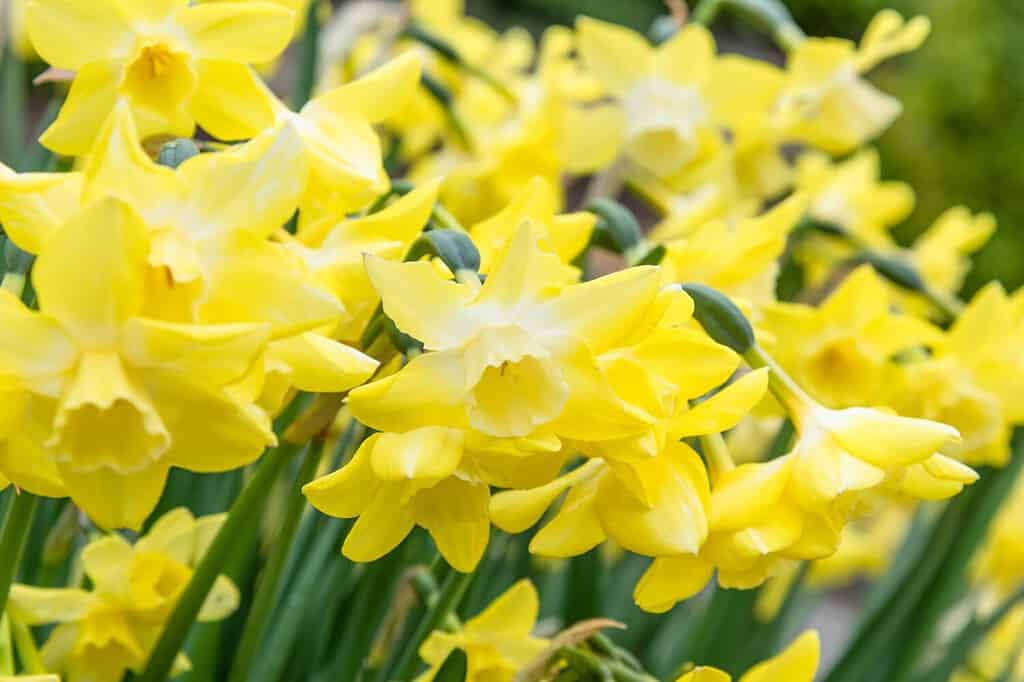
©Andrew Fletcher/Shutterstock.com
9. Fountain Grass (Pennisetum alopecuroides)
Fountain grass is a perennial ornamental grass that produces attractive flowerheads and graceful, arching foliage. It is well-suited to Pennsylvania’s fall climate and is generally hardy, tolerating a range of temperatures. Specimens reach up to 2 feet tall and wide. Their attractive dark green foliage turns vibrant shades of gold in the fall, lasting until the first frost.
Fountain grass thrives in full sun but will tolerate partial shade. However, it produces the most profuse blooms in full sun. It is also drought-tolerant once established but grows fine in Pennsylvania’s moist soils. Cut specimens make great additions to living or dried floral arrangements while living specimens work great in beds, borders, and even containers.
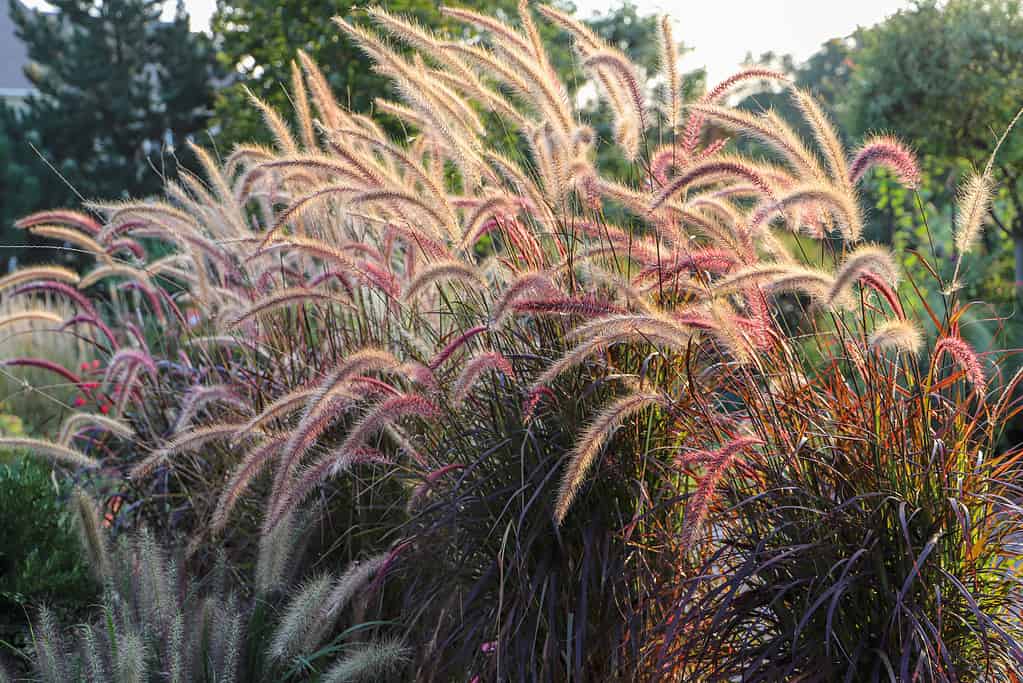
©Molly Shannon/Shutterstock.com
10. Garlic (Allium sativum)
This cool-season bulb plant thrives in the Pennsylvania October air. It is closely related to onions and shallots and has many culinary uses. Gardeners plant garlic in September to October to all the bulbs to establish deep roots before winter which results in larger and more flavorful cloves.
Garlic grows best in full sun and requires at least six hours of direct sunlight daily. It also prefers well-draining, fertile soil. Garlic is low-maintenance, though it is susceptible to pests and diseases including aphids, onion maggots, thrips, white rot, and downy mildew.
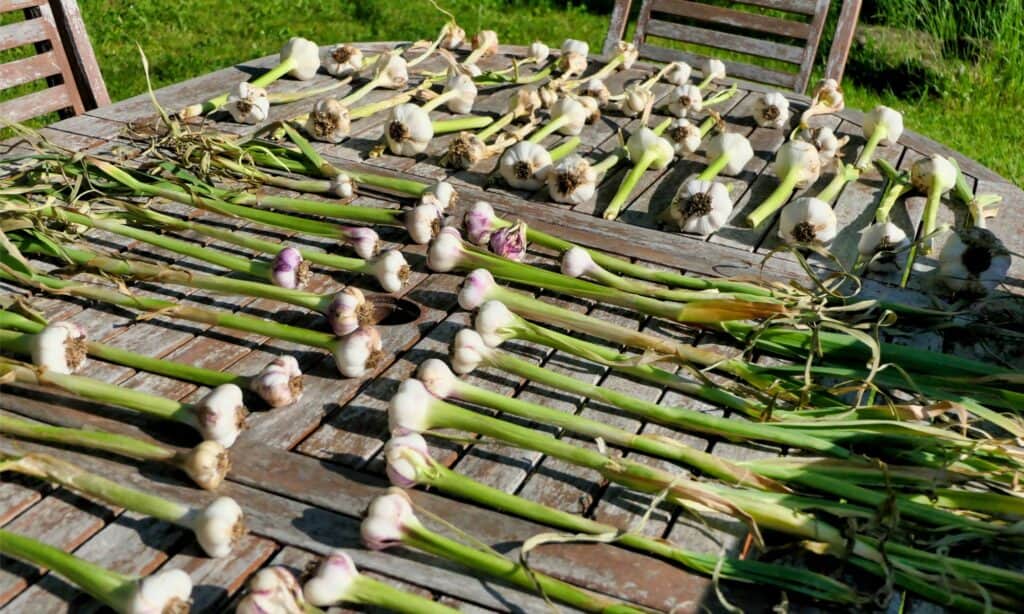
©iStock.com/PlazacCameraman
11. Kale (Brassica oleracea var. acephala)
This nutritious leafy green thrives in cooler temperatures like lettuce. It is well-suited to the Keystone State’s October climate, offering rich flavor and versatility in the kitchen. It is a cool-season vegetable that thrives in both the spring and fall, though specimens taste sweeter (less bitter) in the cooler months of fall compared to spring.
Like most vegetables, kale prefers well-draining soil and full sun to partial shade. It also prefers moist soil and does not tolerate heavy fertilizers. Specimens benefit from a layer of protective mulch to conserve water. It is also susceptible to pests and diseases like lettuce varieties, including aphids, cabbage worms, and flea beetles.

©/ via Getty Images
12. Lettuce (Lactuca sativa)
We don’t necessarily associate lettuce with fall. However, lettuce grows best in cooler temperatures, favoring both the spring and fall. Enjoyed in a variety of dishes from salads and sandwiches to New Age wraps, lettuce comes in many varieties and thrives in Pennsylvania’s moderate climate.
Lettuce is an annual in the Keystone State, preferring well-draining, fertile soil and partial to full sun. It also tolerates some shade and moist soil. It also does not favor fertilization. However, lettuce is susceptible to numerous pests like aphids, slugs, and snails as well as common diseases like downy mildew and powdery mildew.
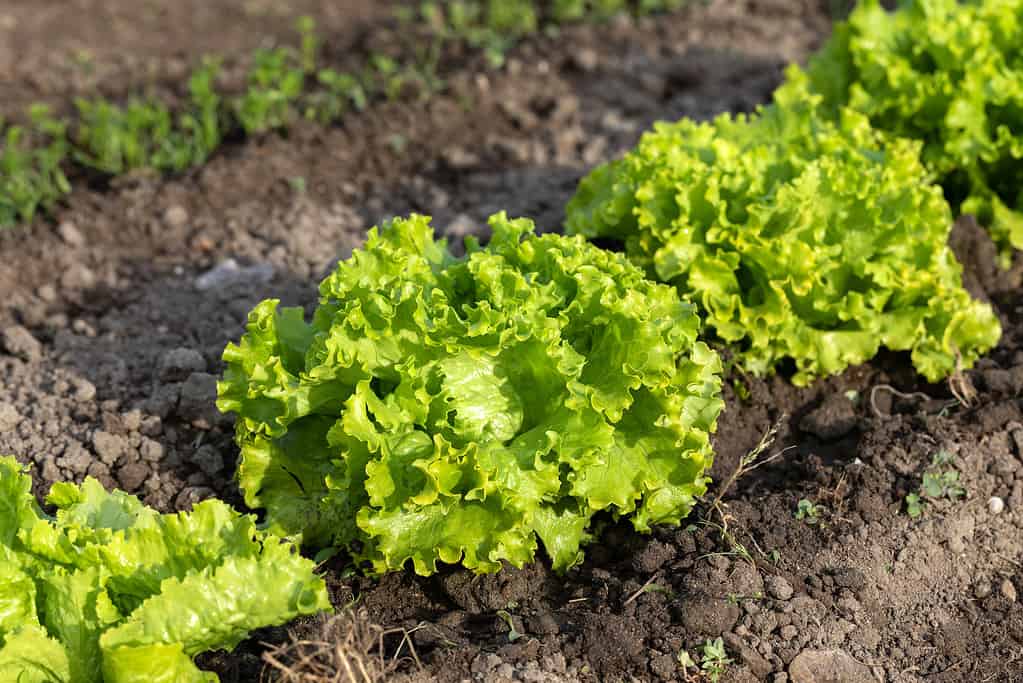
©Thomas Pajot/iStock via Getty Images
13. Onions (Allium cepa)
Onions are a staple in kitchens across the globe, but I bet you didn’t know they are a biennial bulb vegetable. There are many varieties of onions that grow in both the spring and fall seasons in Pennsylvania. They are closely related to other culinary plants like garlic and leeks and are a staple in many cuisines.
Onions love well-draining soil and prefer fertile varieties. They also require full sun and moist soil. They love slow-release fertilizers and are a good source of fiber and Vitamin C. Unfortunately, onions are prone to many pests and diseases like white rot and downy mildew.
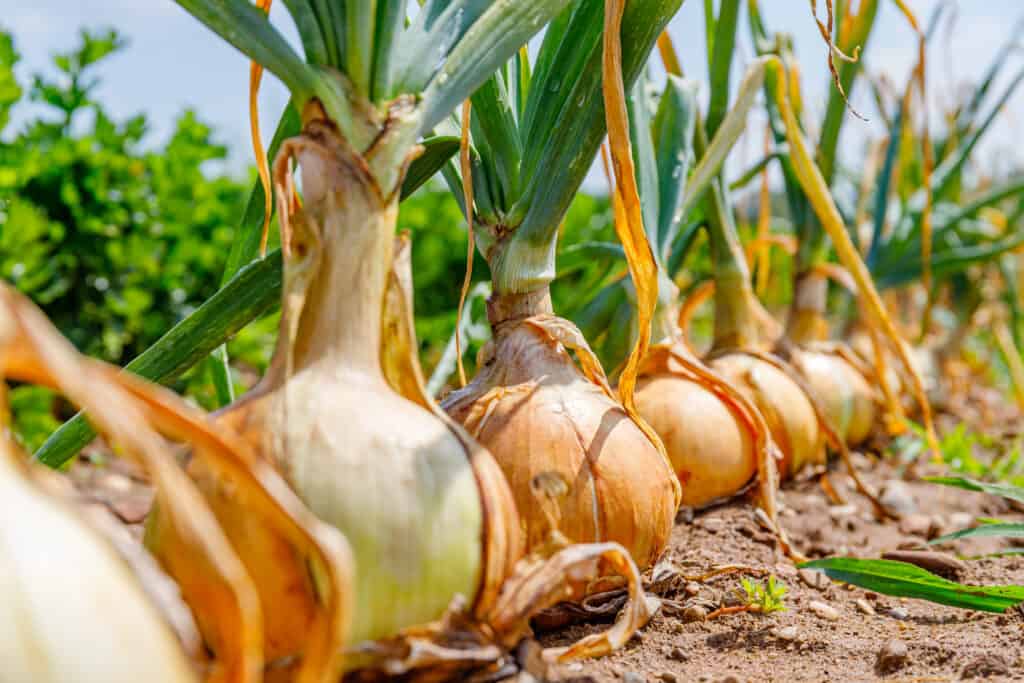
©nnattalli/Shutterstock.com
14. Radish (Raphanus sativus)
Radish is another root vegetable that thrives in the cooler temperatures of fall. It is fast-growing with a crisp and peppery flavor. There are many varieties to choose from, and you can harvest most in three to four weeks.
Radish grows best in well-draining soil and full sun. They also prefer consistent moisture and high organic content. They are incredibly low-maintenance and also not susceptible to many diseases. Most varieties are grown as annuals in Pennsylvania, though some are biennials.
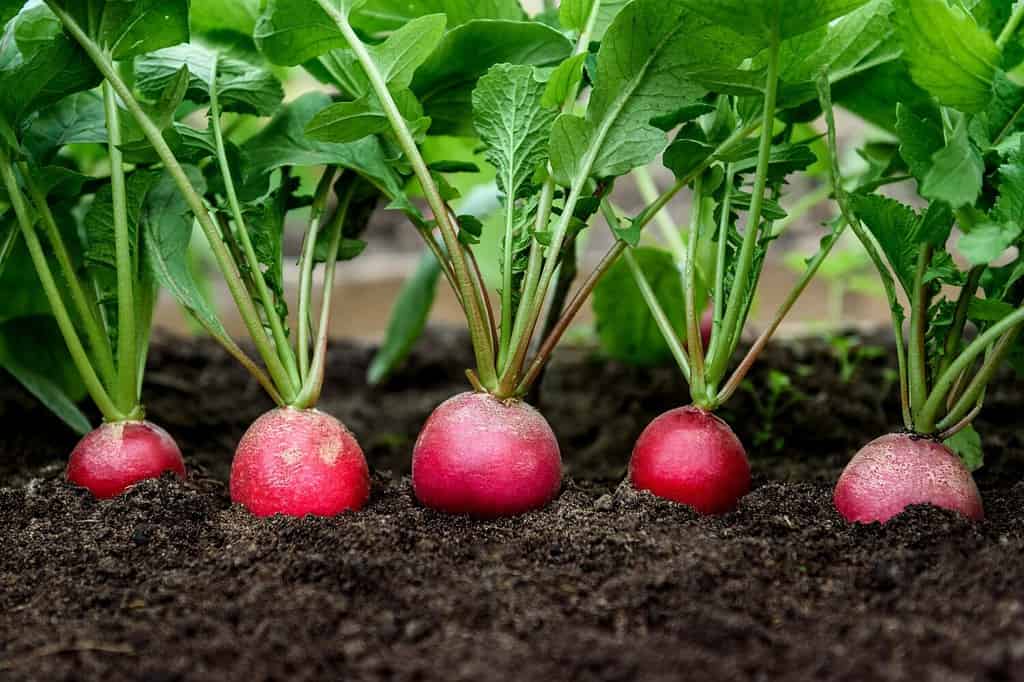
©Natallia Ploskaya/Shutterstock.com
15. Tulips (Tulipa spp.)
Most gardeners think of spring when they hear the mention of tulips. However, fall is the ideal time to plant these spring-blooming bulb plants. Tulips feature slender, upright stems topped with signature, cup-shaped flowers. The flowers come in a variety of colors, including red, pink, orange, purple, yellow, and white.
October is an important month for planting tulips and getting them ready for the long winter to encourage spring blooms. Tulips love well-draining, nutrient-rich soil and thrive in partial to full sunlight. They also appreciate regular watering and applications of slow-release fertilizer in the spring.
Be sure to apply a layer of mulch to insulate your new tulip bulbs and protect them from temperature fluctuations and frost. It is also important to protect your bulbs from the local Pennsylvania wildlife like deer and squirrels.
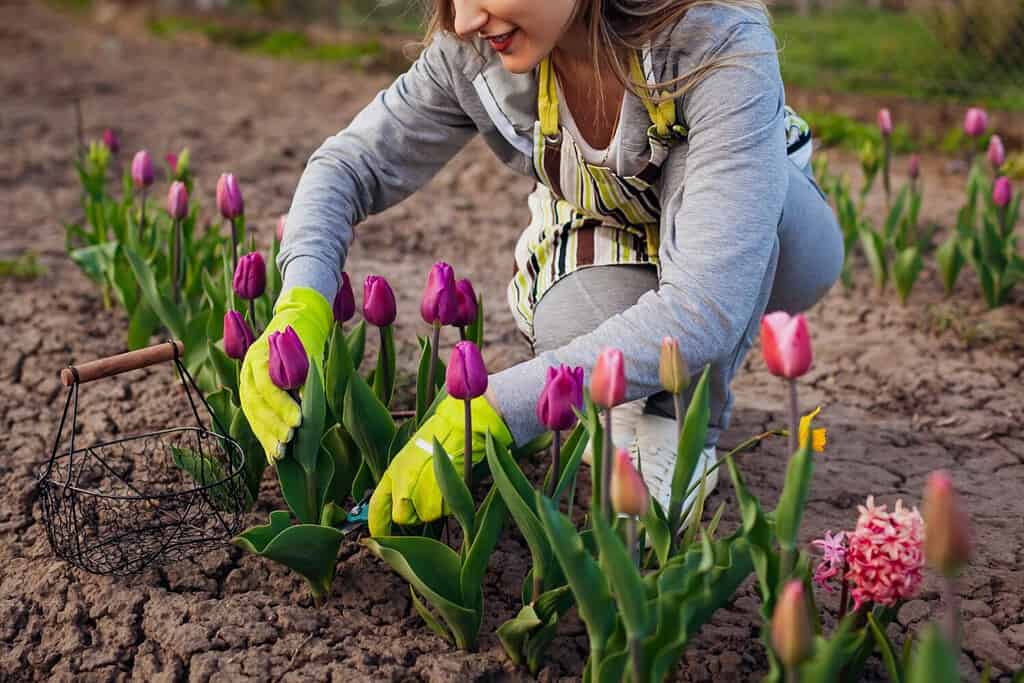
©Mariia Boiko/Shutterstock.com
Fall Planting Tips For Pennsylvania
October is an ideal month for fall planting in the Quaker State. The cool temperatures and consistent rainfall create ideal conditions for many plant varieties to develop strong roots before the winter. Follow some fall planting tips to get the most out of your Pennsylvania garden:
- Select fall varieties: Choose plants that are suitable for fall planting.
- Timing: Fall planting occurs from late August through October, depending on the specific plant and your location within Pennsylvania. Aim to plant at 4 to 6 weeks before the first expected frost date in your area to allow roots to establish.
- Prepare the soil: Prepare the soil by amending it with organic matter, such as compost. Well-drained soil with good fertility is essential for successful fall planting.
- Practice good watering techniques: Adequate watering is crucial during the fall. Even though temperatures are cooler, plants still need consistent moisture to establish roots before winter. Ensure the soil remains consistently moist but not waterlogged.
- Lay mulch: Apply a layer of mulch around newly planted specimens. Mulch helps conserve moisture, insulate roots, and suppress weeds.
- Watch out for wildlife: Fall is an active time for local wildlife. Consider using protective fencing or netting to deter deer, rabbits, or other animals.
Pennsylvania’s unique climate varies from region to region, so be sure to consider your specific microclimate when planning your fall garden.
Preparing Your Landscape For Frost
Frost pokes its cold and ugly head out in late October in most of Pennsylvania. It can damage and even kill sensitive landscape plants and affect the health of your garden. Consider some easy steps to prepare your landscape for the first frost:
- Look up local frost dates
- Select frost-tolerant plants
- Water your plants well before the frost
- Lay mulch to protect your plants
- Moved potted plants indoors
- Drain your irrigation system
- Deadhead and prune plants
- Cover your garden beds
- Harvest sensitive crops like herbs
Planting Possibilities for October in Pennsylvania
Cooler temperatures, changing foliage, and pumpkin spice lattes all signal the arrival of fall in Pennsylvania. As most plants are brown, dry, and dormant, you can extend your growing season well into the fall with options suitable for the cooler weather.
Fall-blooming flowers like mums offer a delightful fall show while cool-season vegetables like kale, broccoli, and onions can stock your fridge and pantry. Whether you’re enhancing your landscape or preparing your garden for spring, October offers a great window of opportunity to flex your green thumb in the Keystone State.
Summary: 15 Best Things You Can Still Plant in Pennsylvania in October
| Number | Common Name |
|---|---|
| 1 | Asters |
| 2 | Blackhaw Viburnum |
| Broccoli | |
| 4 | Carrots |
| 5 | Chrysanthemums |
| 6 | Cilantro |
| 7 | Crocus |
| 8 | Daffodils |
| 9 | Fountain Grass |
| 10 | Garlic |
| 11 | Kale |
| 12 | Lettuce |
| 13 | Onions |
| 14 | Radish |
| 15 | Tulips |
